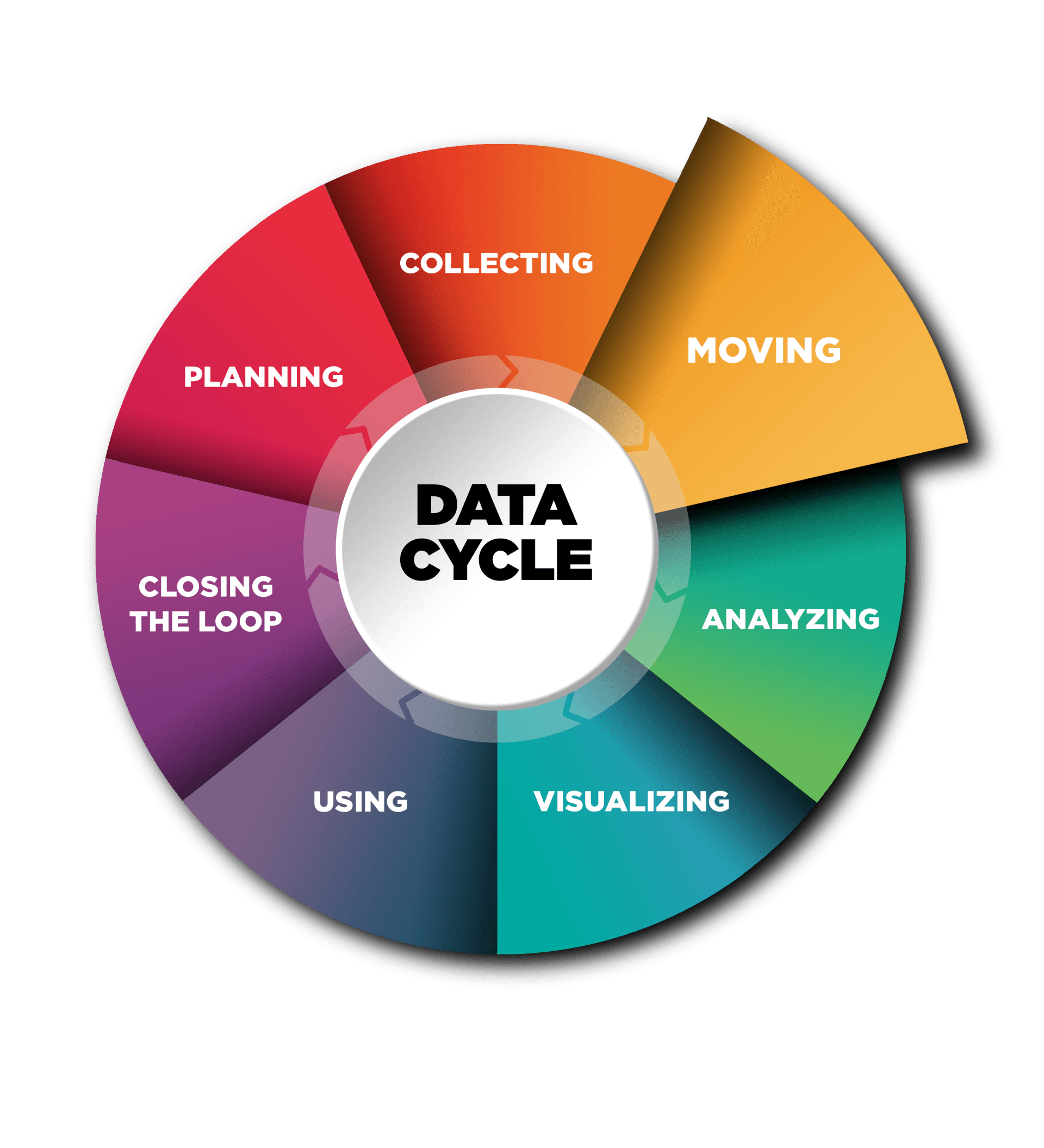Moving
Essential Questions
How do people gain access to the data? Does the data need to be transferred/moved in order to be analyzed? If so, how can the data be moved in a timely and secure manner?
Who is Involved
The Data Lead, Information Technology Team
Enabling Conditions
You have data in one location and need it to be analyzed
Perhaps the most overlooked aspect of good data use strategies is addressing the transferring of data from the system(s) in which it is collected to individuals and groups that need the data for analysis and use. Transferring data is the phase of the data use cycle that moves data from a raw format to a format that can either be accessed by those with relevant skills for analysis or understood by individuals that need it for decision-making. In US PREP’s experience with many educator preparation programs across the nation, this has become the single largest “bottleneck” for effectively and efficiently getting data in front of stakeholders to use for decision-making.
Keep in mind that while data security is important in all applications, in the educational space it becomes especially critical. Educational data is subject to significant regulation, often at both the federal and state level. When choosing a solution for moving data, it is important to consider the potential solution’s ability to comply with both FERPA and any other local requirements. US PREP chose Microsoft SharePoint document libraries for the moving of our data because of its ease of use, industry standard security, and FERPA compliance. Despite these technical aspects of moving data, it is important to consider that moving data requires both technical oversight and interpersonal collaboration. As we highlighted in the collecting phase, developing healthy communication and dialogue continuously will help address any issues that come up (which is bound to occur), as well as help the process move from being a reactive one to a proactive one.
Effective data transfer must first address technical challenges associated with data management systems, student assessment platforms, survey platforms, student information systems, digitizing paper and pencil methods of data collection, and then providing stakeholders access to platforms and systems. Your program will need to determine to what degree the raw data will need to be normalized before permissions are granted and what protocols are appropriate to address data security and confidentiality requirements. Finally, data managers and program leadership will need to provide professional development opportunities to relevant stakeholders that provide step-by-step instructions for both
collecting and accessing needed data.
Data Movement System Diagnostic
In order to identify who and how to improve both investment of data systems and efficiency of use, the tool below will help your team to identify the systems that are most beneficial for your program in moving data from one element to another. Each of these systems has been rated against criteria that promote effective data movement.
Review the identified systems and determine which one most closely matches your own and/or meets your needs and determine the personnel/capacity required, timeline, and training and onboarding needed to implement.
As mentioned above, moving data is made up of two parts: 1) the technical and, 2) collaboration. Below are a few resources to assist programs with addressing these two concerns.
Technical
Each program will need to consider unique technical issues. Working with the institution’s Student Information System (SIS) and Learning Management System (LMS) data (e.g. coursework data), the program’s assessment platforms (e.g. instructional framework/rubric clinical experience data), and external data such as state level administrative data, it is challenging to provide a comprehensive list of resources that are applicable for all contexts. However, what has been provided are a few that address US PREP’s context. Reviewing what US PREP takes into account can help guide individual program decision-making processes.
Collaboration
Collaboration includes a number of areas, but the two most critical are understanding your program’s needs and training and supporting stakeholders. Learning what stakeholders need and providing continuous training will support your efforts of ensuring that each individual is prepared. To aid in your planning efforts to increase collaboration and communication, leverage columns
L-O on the
Data Planning Worksheet you began in the
Planning step as well as the notes you took on the Data Movement System Diagnostic above.
Pause and Process
At the end of each section of the US PREP Data Toolkit we will ask a few brief questions for you to consider on your journey. Once you have completed all the Pause and Process Sections, you can continue to the next step in the Data Toolkit.



